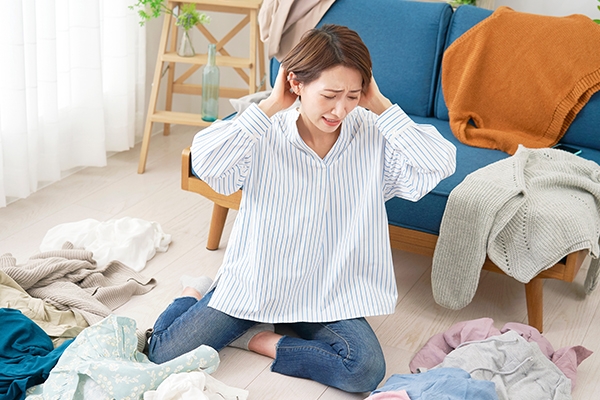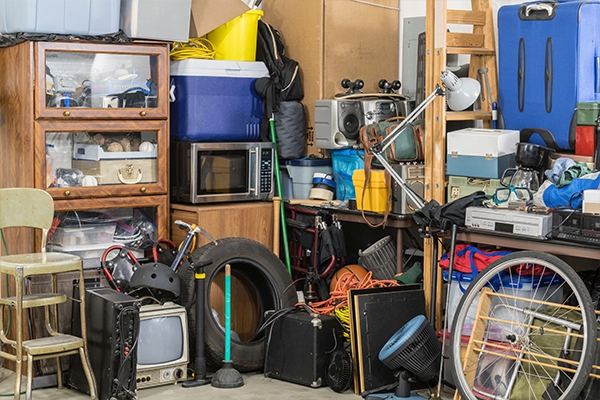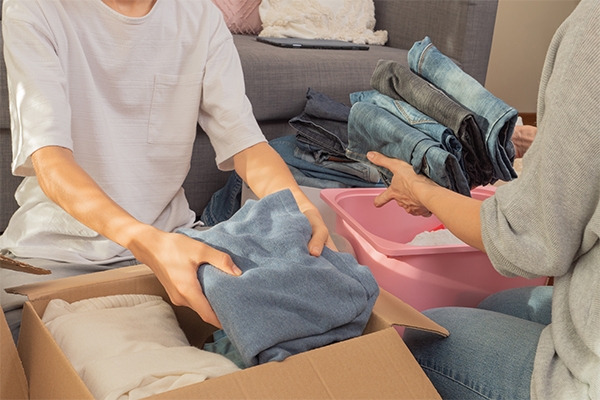Hoarding Disorder: Symptoms & How to Overcome It

Caesar Hito, a soap opera actor, has admitted to suffering from a hoarding disorder, a mental disorder he has had since elementary school (detikhot). What exactly is hoarding disorder?
What is hoarding disorder?
People with hoarding disorder have an excessive attachment to items, even items that seem useless or worthless.
They enjoy purchasing and collecting items but they become stressed when they have to throw them away. This condition makes their living environment dirty, unclean, and unsafe and hurts those around them.
While no one should have to live in a cramped, unclean space, it’s important to remember that hoarders don’t choose to live this way.
Hoarding disorder is a complex health condition. Helping them organize and cleanse their belongings alone is not the right option. Instead, it makes them resentful and angry and more likely to hoard more items.
Scientifically, hoarding is classified as a subtype of obsessive-compulsive disorder (OCD). However, according to psychologist David Tolin, PhD, ABPP, director of the Anxiety Disorders Center at the Institute of Living at Hartford Hospital and a professor at Yale University School of Medicine, most hoarders don’t exhibit classic OCD symptoms, such as intrusive, repetitive thoughts.
This suggests that hoarding disorder is a unique phenomenon despite its OCD connection.
Identify the symptoms

Hoarding disorder is more than untidiness and cleanliness. People with hoarding disorder often overestimate the value of their possessions. They feel the need to collect items, even if they are useless, and are emotionally distressed when they throw them away.
The clutter they accumulate can be problematic. Accumulated items often block doorways, making it difficult to access the house or room, and increasing the risk of fire or accidents.
A messy home also harbors dust, mold, and insects, which can lead to serious health issues.
In the early stages, this clutter may be difficult to distinguish from ordinary disorganization or having too many items. So, at what point does someone become a “hoarder”?
Cluttered people are usually still comfortable inviting others into their homes. Even though their rooms are messy, they are still accessible and can be used for their intended purpose.
On the other hand, hoarders may use their bathroom, bedroom, or kitchen to store piles of newspapers, boxes, plastic bags, or other worthless items. This makes it difficult for them to use the toilet, sleep, or cook.
For example, Hito often keeps unused items or trash. Hair that falls out, food wrappers, and his teeth that fall out. Feeling sad about these items drives him to keep them.
Collectors are known to proudly display their collections, taking pleasure in their items without feeling guilt, shame, or anxiety. The items they collect usually have a clear monetary or sentimental value.
Unlike a hoarder’s home, which is cluttered, a collector's house remains organized even when full.
People who like to hoard things have a different intensity than collectors or those who are simply messy. They have a compulsive need to collect and keep things, even worthless, and have great difficulty throwing them away.
What causes it?

Some hoarders fear running out of items, have a compulsive need to collect freebies or find it impossible to pass up a deal or discount. Others simply view throwing away items as wasteful.
Hoarding disorder is most commonly diagnosed in adults with a family history of hoarding. Some people develop symptoms following a traumatic event, such as a divorce, accident, or death of a loved one.
Additionally, many people report that their hoarding is associated with other mental health issues, including OCD (Obsessive Compulsive Disorder), various anxiety disorders, depression, PTSD (Posttraumatic Stress Disorder), or ADHD (Attention Deficit Hyperactivity Disorder).
How to talk to them

Despite their unorganized and sometimes unhealthy living conditions, some people with hoarding disorder may not consider their behaviour as problematic. It may take some effort to talk about changing their habits.
Do the following
1. Learn about the hoarding disorder first
The more you learn about the disorder, the easier it will be to empathize with your loved one and provide the best possible support.
2. Listen and use the same terminology when talking about their possessions
People who hoard things don’t call their possessions “junk.” Pay attention to how your loved one refers to their possessions—for example, “collections” or “items”—and take their lead. This can help you build trust and understanding.
3. Focus on safety
Focus on your concerns about their safety. For example, emphasizing reducing hazards and the risk of accidents or fires can often help to start change.
4. Offer help
Provide support without being pushy, such as helping to tidy up a specific area without making them feel judged.
5. Encourage the hoarder to get professional help
Offer to help them find a therapist, support group, or treatment program. Talk to them about their options and offer to accompany them to appointments.
Please don’t do it
1. Be judgmental
People with hoarding disorder are often socially isolated and feel guilty and ashamed about their situation. Through your words or body language, try to listen without making negative judgments about them.
2. Argue
Trying to take control or force the hoarder to act a certain way would only breed anger and resentment—and make the hoarder even more determined to keep their belongings.
3. Minimize challenges
Hoarding disorder is about more than just getting rid of unnecessary items to solve the problem. Recovery is a gradual, step-by-step process.
4. Discourage
It’s easy to get frustrated when talking to someone and focus only on the negative. However, doing so will only make the hoarder more defensive. Instead, try to encourage them by acknowledging the positive aspects. For example, the stairs are clear of objects so they can’t trip, or there’s still room on the kitchen counter so they can prepare meals.
5. Tell them what items to throw away or touch without permission
The items being hoarded may seem worthless to you, but it’s important to let the hoarder feel in control. Be respectful, let your loved one decide what to throw away, and ask permission before touching anything.
Is it curable?
While medication can help with underlying issues, such as anxiety or depression, cognitive behavioral therapy (CBT) is the primary treatment for hoarding disorder. Either in a group setting or on your own, CBT can address the negative thoughts that contribute to hoarding and help hoarders develop new behavior patterns.
Here are some strategies for treating hoarding:
- Challenging the hoarder’s thoughts and beliefs about the need to keep things and about collecting new items.
- Going out of the house without buying or picking up new items.
- Throwing away and recycling unused items. First, practice throwing away unused items with the help of a doctor or coach, then throw away unused items on your own.
- Finding and joining a support group or working with a coach to sort and reduce clutter.
- Understanding that relapse is possible.
- Making a plan to prevent clutter in the future.
Medications, such as antidepressants, can be used to help manage disorder symptoms including anxiety or depression.
Hoarding disorder is a serious problem that requires professional help. Individuals suffering from hoarding disorder might improve their quality of life and overcome their issues with the right diagnosis and therapy.



